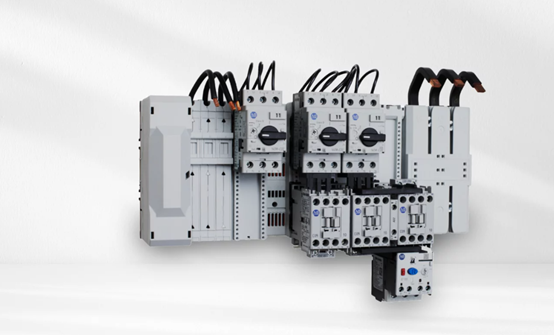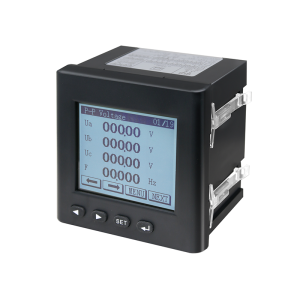There are many pressure switches types, which are indispensable components in automated control systems. They can sense the pressure changes in the fluid system and send a signal when the pressure reaches the set value, thereby controlling the operation of related equipment. This article will explore the various different types of pressure switches in depth to help you better understand and choose the appropriate pressure switch.
Pressure switches types – Mechanical pressure switch
Mechanical pressure switches are widely used devices that operate based on physical principles to monitor and control pressure levels within various systems. These pressure switches utilize a mechanical element, typically a diaphragm or bellows, which responds directly to changes in pressure. When the pressure in the system reaches a specified threshold, the movement of the diaphragm or bellows activates a mechanical mechanism that opens or closes electrical contacts, thereby completing or interrupting an electrical circuit.

Components

Diaphragm or Bellows: The primary sensing element that reacts to pressure changes. As pressure increases, the diaphragm or bellows flexes, translating the mechanical force into movement.
Mechanical Contacts: These are the electrical contacts that are opened or closed by the movement of the diaphragm. They can be configured as normally open (NO) or normally closed (NC) depending on the application’s requirements.
Adjustment Mechanism: Many mechanical pressure switches include an adjustment screw or dial that allows users to set the desired pressure threshold at which the switch will activate.
Housing: The outer casing that protects the internal components from environmental factors, such as dust and moisture.
Operating Principle
When pressure is applied to the diaphragm, it flexes in response. If the pressure exceeds the pre-set threshold, the diaphragm’s movement triggers the mechanical contacts to open or close, thus sending an electrical signal to control devices like pumps, alarms, or other machinery. The switch will remain in its new state until the pressure drops below a certain level, at which point it resets.
Pressure switches types – Electronic pressure switch
Electronic pressure switches are advanced devices designed to monitor and control pressure levels in various applications with high precision and reliability. Unlike mechanical pressure switches, which rely on physical movement to operate, electronic pressure switches use electronic sensors and circuits to detect pressure changes and activate or deactivate a circuit accordingly.

Components
Pressure Sensor: The core component, typically a piezoelectric or capacitive sensor, converts the physical pressure into an electrical signal. These sensors are highly sensitive and can detect minute changes in pressure.
Microcontroller: This component processes the electrical signal from the sensor, comparing it to predefined pressure thresholds. It determines the appropriate action, such as opening or closing an output circuit.
Output Interface: Electronic pressure switches often feature various output types, such as relay contacts, analog signals, or digital communication protocols (like MODBUS or CAN), allowing easy integration into control systems.
Display and Controls: Many electronic pressure switches include a digital display for real-time pressure readings and user-friendly controls for adjusting set points and configurations.
Housing: A robust enclosure protects the internal components from environmental conditions, ensuring reliable operation in diverse settings.
Operating Principle
When pressure is applied, the pressure sensor detects the change and generates an electrical signal proportional to the pressure level. The microcontroller processes this signal and compares it against user-defined set points. If the pressure exceeds or falls below these thresholds, the microcontroller activates the output interface, signaling other devices (like alarms, pumps, or valves) to take action.
Other Pressure switches types
In addition to mechanical and electronic pressure switches, there are several specialized types of pressure switches designed for specific applications and environments. These switches cater to unique operational requirements, ensuring optimal performance in various industries. Here are some notable categories:
1. Differential Pressure Switches
Differential pressure switches measure the difference in pressure between two points in a system. They are commonly used in applications such as HVAC systems to monitor filter conditions, ensuring that air or fluid flow is maintained within acceptable limits. By detecting pressure drops across filters or ducts, these switches can signal when maintenance is needed or when a filter is clogged.

2. Vacuum Pressure Switches
Vacuum pressure switches are designed to operate in environments where a vacuum needs to be maintained. They are widely used in packaging, food processing, and pharmaceutical applications. These switches activate when the pressure falls below a specified level, ensuring that processes such as vacuum sealing or product preservation are performed correctly.

Conclusion
Understanding the various different types of pressure switches and their specific applications is crucial for engineers and technicians when selecting the appropriate device for a given task. Whether it’s ensuring the proper functioning of HVAC systems, maintaining vacuum conditions, or controlling liquid levels, specialized pressure switches enhance system performance, safety, and efficiency across a wide range of industries. By choosing the right type of pressure switch, organizations can achieve optimal operation and reliability in their processes.






